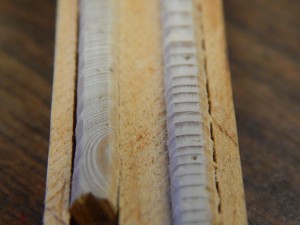Greetings from Thornton, New Hampshire! I’ll introduce myself as Jarred Jones, an REU student from Gettysburg College. I’m not actually from Pennsylvania though… Groton, Massachusetts is my hometown, not even two hours from Hubbard Brook. Groton is a classic New England town with a vibrant small population of humans and cows living together in harmony. Mostly cows though.
Why am I here at Hubbard Brook? Here’s a little about myself.
 Growing up in Groton, I got a little bit of both worlds. I was close enough to Boston to experience the city life, but also rural enough to be embedded with a love for the outdoors. Fly fishing, hunting, and exploring characterize the majority of my time…when I’m not studying. I’m a rising senior and Environmental Studies major at Gettysburg College, double minoring in Biology and Mathematics. At Gettysburg, the Environmental studies major is relatively malleable, allowing me to create my own concentration – Wildlife Ecology. However aside from wildlife ecology I have a keen interest in disturbances in forested ecosystems – the theme of my project this summer.
Growing up in Groton, I got a little bit of both worlds. I was close enough to Boston to experience the city life, but also rural enough to be embedded with a love for the outdoors. Fly fishing, hunting, and exploring characterize the majority of my time…when I’m not studying. I’m a rising senior and Environmental Studies major at Gettysburg College, double minoring in Biology and Mathematics. At Gettysburg, the Environmental studies major is relatively malleable, allowing me to create my own concentration – Wildlife Ecology. However aside from wildlife ecology I have a keen interest in disturbances in forested ecosystems – the theme of my project this summer.
My mentor this summer is Don Buso, Technician and Manager of Field Research at HBEF. Together, we will be attempting to solve a simple mystery: what happened in Watershed 6, the biogeochemical reference watershed? Recent work has theorized the growth regime of W6 over that past 40 years to be consistent with normal northern hardwoods biomass accumulation rates. Extrapolated backwards, it is logical to assume that Watershed 6 was clear cut in 1915. However, high-resolution photographs of Watershed 6 from the 1940’s and 1950’s reveal a mature deciduous canopy dotted with conifers and hundreds of fallen trees on the ground. These conditions would not have been likely had Watershed 6 actually experienced a severe cut 30 years earlier. The standing history of Watershed 6 neglects the 1938 hurricane and site-specific history that is an important factor in the growth regime pattern.
 Our study focuses on determining an improved history of Watershed 6, and approximate flow of soil carbon in the last 200 years. This is important because logging and disturbances can cause change in biomass and nutrients within an ecosystem, and these changes are difficult to quantify without a clear history. In addition, an accurate history of Watershed 6 is valuable for use in theoretical modeling of ecosystem development, resilience and sustainability at Hubbard Brook.
Our study focuses on determining an improved history of Watershed 6, and approximate flow of soil carbon in the last 200 years. This is important because logging and disturbances can cause change in biomass and nutrients within an ecosystem, and these changes are difficult to quantify without a clear history. In addition, an accurate history of Watershed 6 is valuable for use in theoretical modeling of ecosystem development, resilience and sustainability at Hubbard Brook.
Throughout the summer I will be taking cores from Red Spruce and Eastern Hemlock; both long lived species with distinct growth rings. I will be looking for years that the tree’s growth is suppressed and released, comparing them with years of known forest disturbance to create an accurate timeline. The 1940’s photographs will be used to estimate historic carbon flow through Watershed 6.
Despite already having sore arms, I’m still excited for what’s to come!